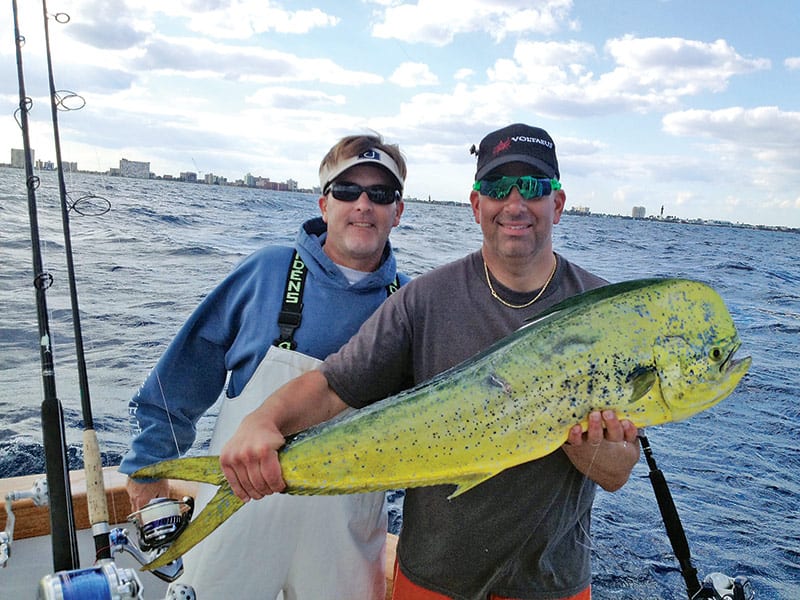Mahi mahi are some of the most popular fish to catch and eat here in South Florida. As we transition from spring to summer, our best opportunities to catch this delicious species will increase. While it is relatively easy to catch small mahi, getting the big slammers to bite can sometimes be difficult. Here are some tips to help you make the most of mahi season.

Fish Below the Surface: A planer should also be a part of every mahi hunters spread. The biggest fish are often lurking just below the smaller fish that are schooling and feeding on the surface. Large mahi see the smallest of these surface fish as prey and will attack and eat their young without hesitation. By trolling a number 4 or number 6 planer, you can get baits down and in front of these larger fish. A long shock leader of at least 75 feet is recommended and be sure to see your local tackle store to get a removable planer rig set up. A good shop will also show you how to use it. Tie an 80 pound Spro barrel swivel to the end of the shock cord and then another 10 feet of 40 or 50 pound Fluorocarbon leader material to the bait. Medium to large bonito strip baits and double hooked ballyhoo with a pink and white or blue and white Sea Witch are deadly.
Popper Plugs and Jigs: When venturing offshore, always have at least two medium to heavy spinning rods rigged with jigs and ready to cast at a moment’s notice. Mahi that are schooling around weed patches or floating debris will be at the surface and will prefer a jig or popper that causes commotion and appears to swim. Larger poppers casted way past the debris will often get the bigger fish to attack. They are often lurking just out of view, either below or on the outskirts of whatever you are casting on. Be sure to have a second spinner rigged with a sinking or butterfly jig. This type of lure will dive quickly past the smaller fish on top. Be sure to let it sink to at least 90 feet and be ready for a bite on the way down. This is also a very effective way to entice wahoo that are almost always deep below whatever is floating on the surface. You may want to use titanium leader material for this jig to prevent getting cut off.
Keep Your Boat in Gear: One of the most common ways to lose the largest mahi or any fish of a lifetime is to take your boat out of gear when the fish gets close to the boat. Your engines are your friends. Keeping steady and consistent pressure on a fish is paramount to landing it successfully. Try to keep the boat moving forward and with the fish. Slowly close the gap and keep a constant bend in the rod. As the fish gets closer, try to keep his head in the water at all times. A sudden release of pressure caused by pulling the boat out of gear allows several escape routes. First, the fish can and often will sense the relief and swim directly towards the propellers or underneath the boat, breaking the line and losing the fish. The fish will also be able to freely shake its head and will often throw the hook right next to the boat. Never take the boat out of gear! It is also very important to have the proper size gaff. A gaff that is too big is one of the most common mistakes. Gaff heads should be no wider than 2 or 3 inches at the bite, which is plenty for gaffing fish up to 70 pounds or so. The gaff should be extended out away from the gunnel with the point down and over the head area of the fish. With the boat in gear, take your shot and keep the momentum of your swing coming towards the boat. Bonus Tip: Keeping the boat moving while you fight the fish also enables you to continue to fish a bait or lure and greatly increases your chance at catching the large cow or bull that was swimming with the first fish you hooked.
~ Capt. Anthony DiGiulian


